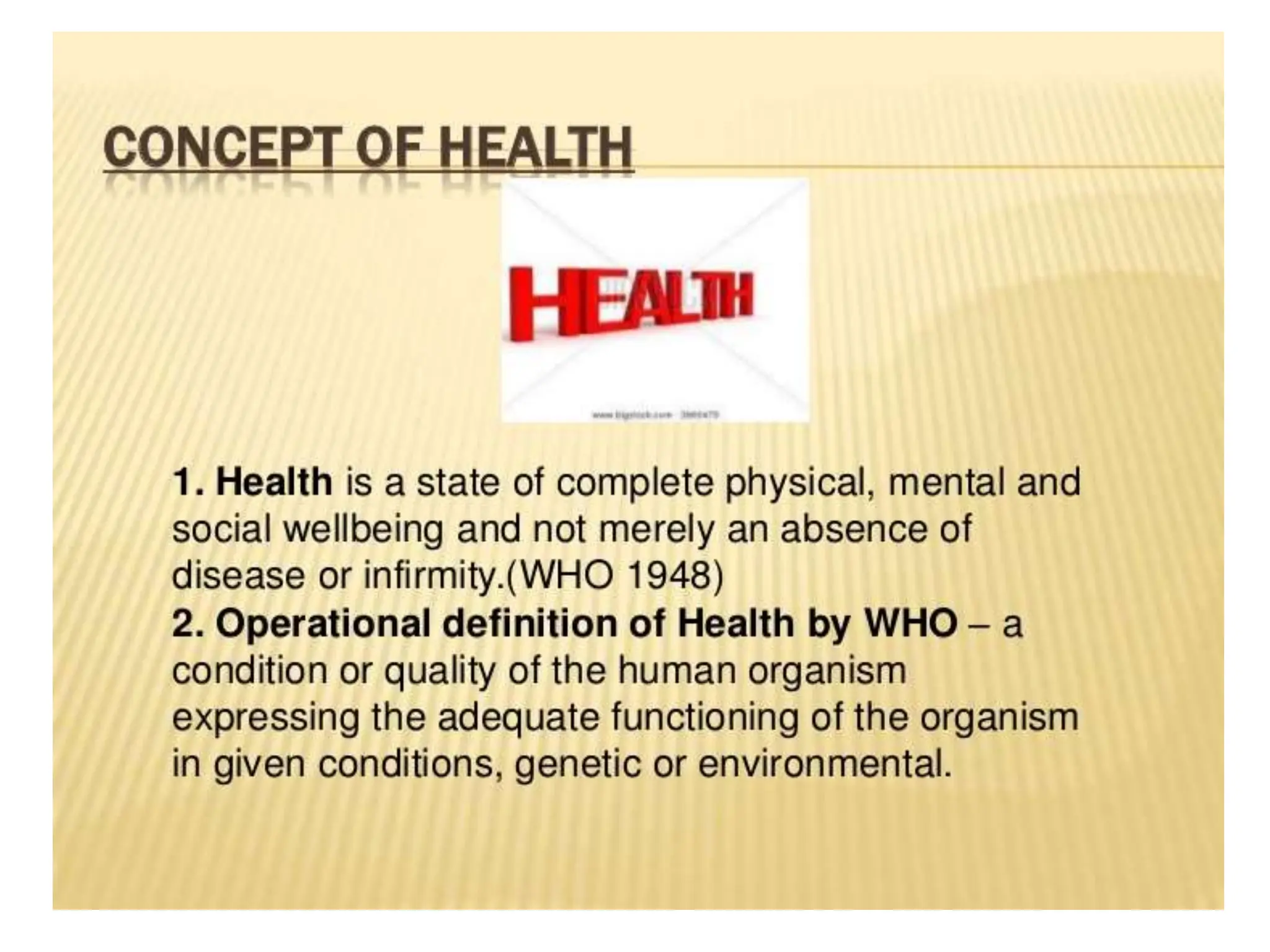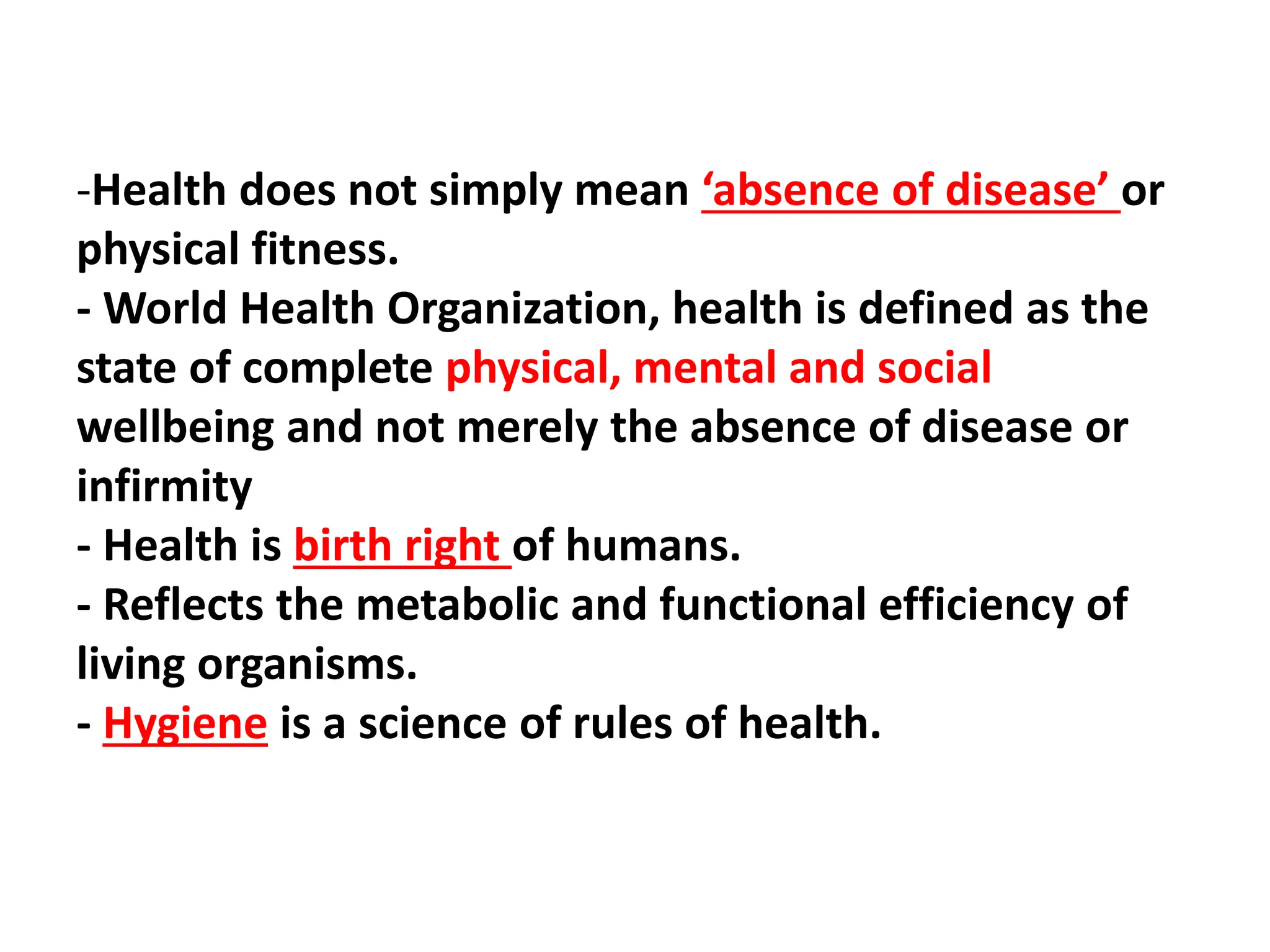- Health involves complete physical, mental, and social well-being, not just the absence of disease.
- The immune system protects the body from infectious agents through innate and acquired immunity. Innate immunity provides nonspecific defenses like skin barriers and immune cells. Acquired immunity involves adaptive responses like antibody production and immunological memory.
- Key cells of the immune system are lymphocytes and antigen-presenting cells. Lymphocytes include B cells and T cells that carry out antibody-mediated and cell-mediated immunity. Antigen-presenting cells engulf pathogens and present antigens to activate helper T cells.




















































































































































































































































































